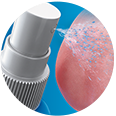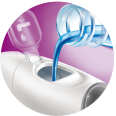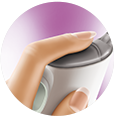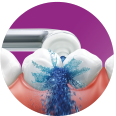1 min read – Ben Atkins Introduction Gum disease is a very common condition which affects most adults in the UK at some point in their lives. If it is not treated, it can lead to losing one or more teeth. With helpful advice from your dental professional and regular at-home care, you can reduce your risk of gum disease affecting your mouth. So how can you recognise the signs of gum disease and how can you avoid it? Summary list

Ben Atkins President of the Oral Health Foundation
What are the signs of gum disease?
If your gums are healthy, they should be pink and firm and there should be no bleeding from them. If you have early gum disease you may find that your gums become red and swollen and they may bleed after you brush or floss your teeth. This condition is called gingivitis (early stage gum disease). Gum disease doesn’t always cause pain so it is really important to attend your dental check-ups, so your dental professional can spot any potential problems early on. What causes gum disease? The most common cause is a sticky coating of plaque either round or in between your teeth. If you are not brushing your teeth thoroughly and interdental cleaning regularly the bacteria in plaque irritates your gums, making them swollen, red and sore. The bacteria within plaque can also cause tooth decay. Other factors that can lead to gum disease include: It is important to follow healthy lifestyle advice to reduce your risk of general health problems and visit your GP for any stop smoking advice. If you have the beginning stages of gum disease and it is not treated, it can start to affect the tissues that hold your teeth in place. This is called periodontitis or periodontal disease. Symptoms of this can be bad breath, a nasty taste in your mouth and even loose teeth. At an advanced stage, swellings can occur under your teeth. When gum disease is present dental treatment may be recommended by your dental professional to treat your gums. This treatment will include tailored oral hygiene advice and in some cases deep gum cleaning may be required to help slow down progression of the disease.
What happens if I have gum disease?
Recommended

Philips Sonicare DiamondClean 9000 Series Special edition sonic electric toothbrush
HX9911/88
Whiter teeth in just 3 days*
Start every day in style with advanced Sonicare technology for whiter teeth and oral health. Gentle on gums with a connected app for coaching and tracking. Choose from 4 modes and 3 intensities for a personalised brushing experience.
See all benefitsAvailable in:
-
- Up to 10x more plaque removal
- Up to 7x healthier gums
- Medium Soft Bristle
- Compatible with all Sonicare handles except Philips One and Kids
£54.00* -
- Up to 20x more plaque removal
- Up to 15 x healthier gums
- Up to 100% whiter teeth
- Soft Bristle
- Compatible with all Sonicare handles except Philips One and Kids
£29.99* -
- Removes up to 99.9% of plaque
- Complete clean in 60 seconds
- 2 flossing modes, 3 intensities
- 250 ml reservoir
Conclusion
Gum disease is a very common problem, affecting many people. It’s important that the signs of gum disease are spotted early to prevent it leading to far more serious issues, which could include tooth loss. Good oral hygiene and regular dental check-ups are the best form of prevention.
Our five-step routine for a healthy smile
Clean that
tongue AM: Clean for 60 secs
AM: Clean for 60 secsClean that tongue
 AM: Clean for 60 secs
AM: Clean for 60 secs
Click

Spray

Scrape
Tip: Remove bad breath bacteria that settle overnight by cleaning your tongue first thing.
Brush those
teeth AM + PM: Brush for two minutes
AM + PM: Brush for two minutesBrush those teeth

AM + PM: Brush for two minutes
Fact: Acidic breakfast foods can weaken your enamel for about 45 minutes after you've eaten.
Tip: Brush before breakfast, and rinse with alcohol-free mouthwash after you've eaten.
Blast that
plaque PM: Floss between your teeth
PM: Floss between your teethBlast that plaque

PM: Floss between your teeth

Load

Aim

Fire
Tip: 40% of each tooth is hidden by its neighbor. Remove plaque from between your teeth before you brush, so your toothpaste can work its magic.
Replace that
brush head Every 3 months
Every 3 monthsReplace that brush head
 AM: Clean for 60 secs
AM: Clean for 60 secsEvery 3 months
Fact: As your bristles wear out they start to remove less plaque.
Tip: If your blue reminder bristles fade before three months of use, it's time to replace your brush head.
Whiten that
smile In office or at home
In office or at homeWhiten that smile

In office or at home
Fact: Over four million patients whitened to a beautiful, white smile with Philip Zoom!
Tip: Special occasion coming up? Whitening can give you a brighter, more confident smile.













